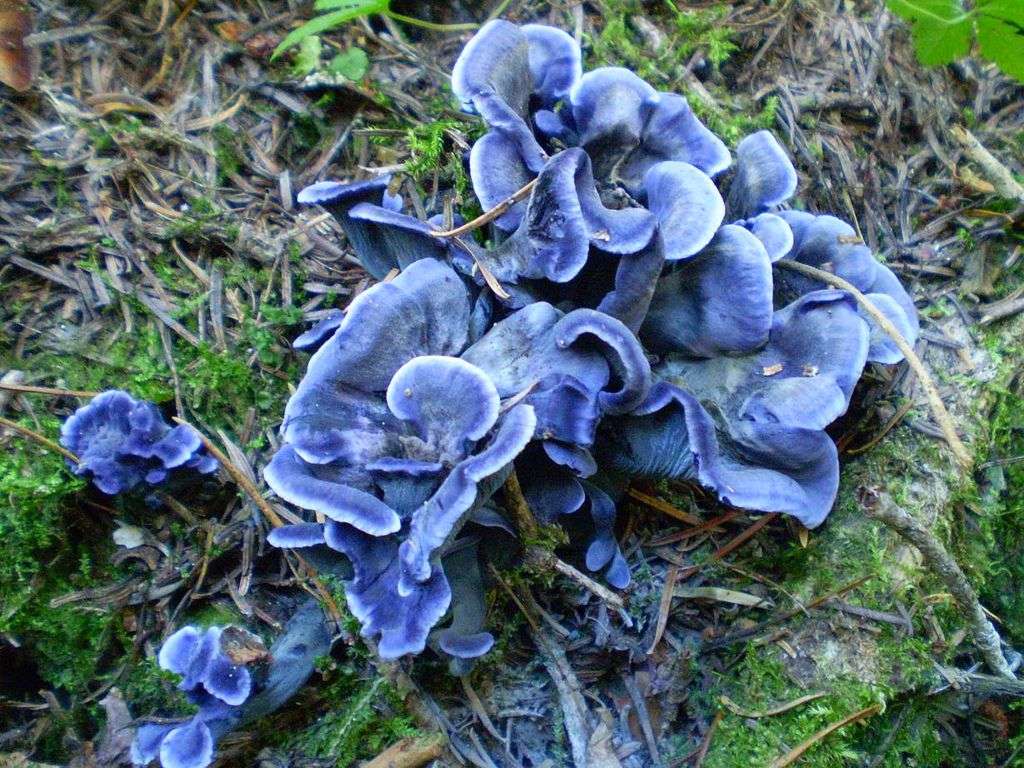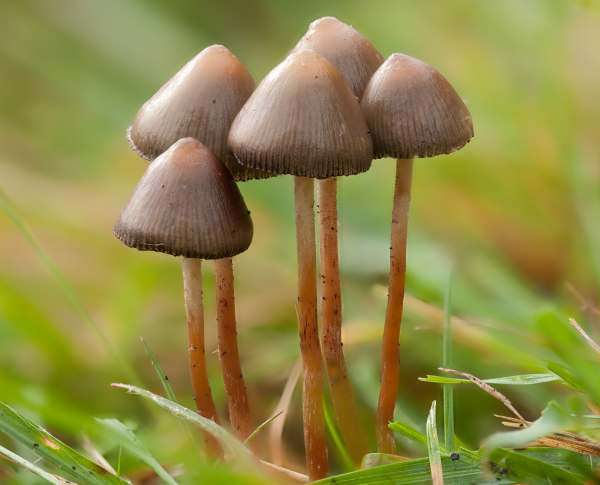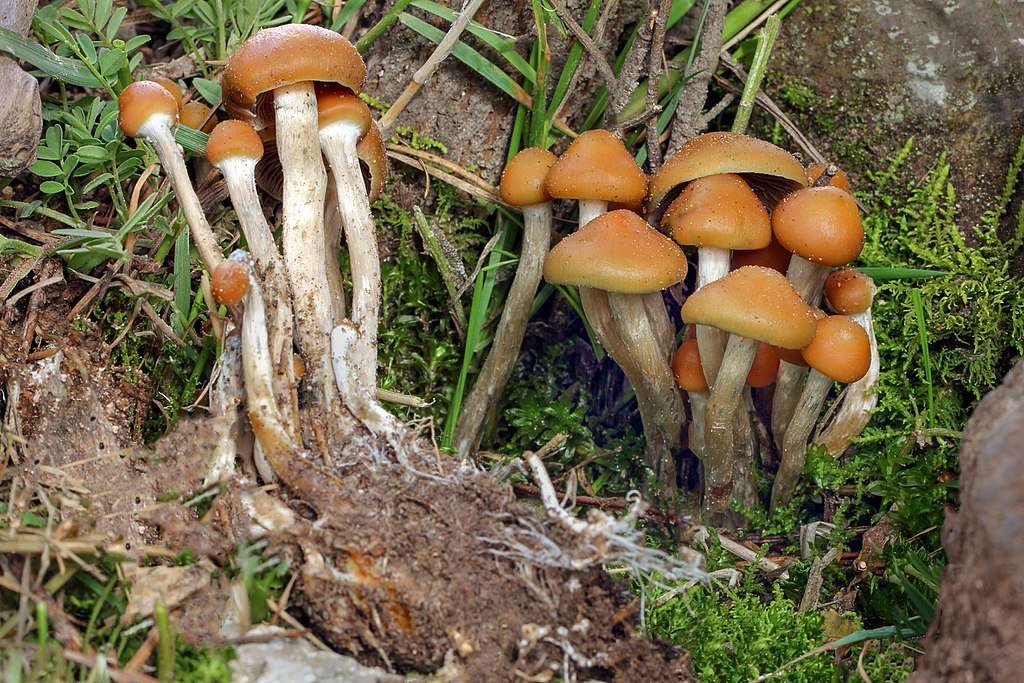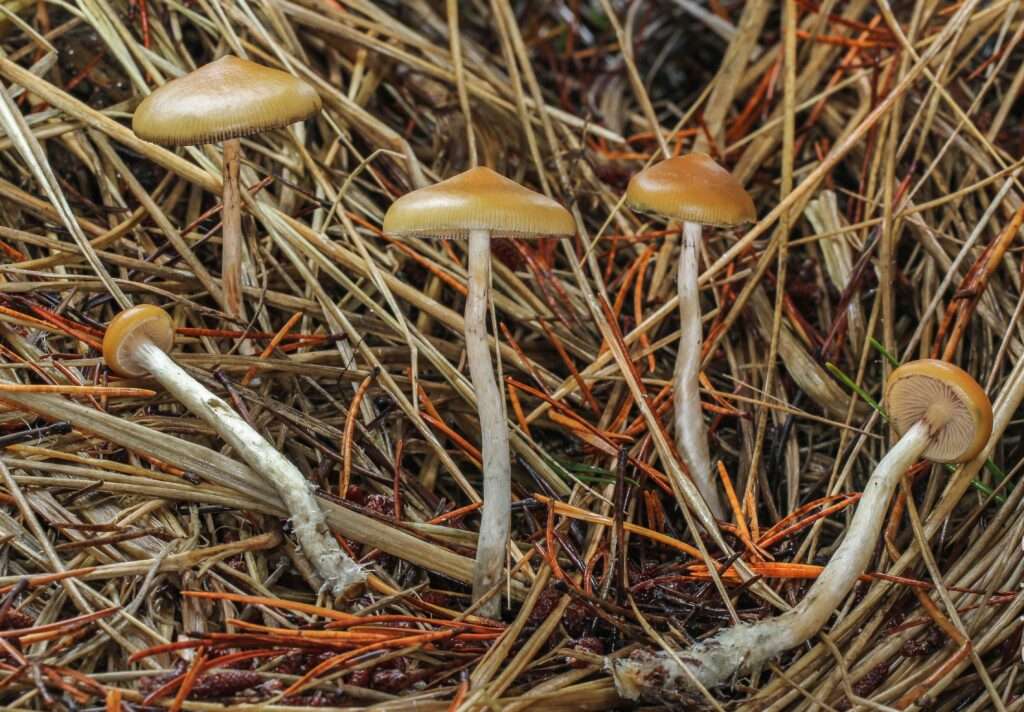
Scientific name
Polyozellus multiplex
Description
The Blue chanterelle mushroom is a beautiful mushroom that exists in clusters. Because of the similarities of their fruit body structures and the shape of the spore-producing zone on the underside of the caps, Polyozellus multiplex belongs to the family of fungi commonly referred to as cantharelloid mushrooms. The black chanterelle’s funnel-shaped fruit bodies develop in groups on the ground, sometimes in sizable masses that can have aggregate diameters up to 1 meter, while they typically have diameters of up to 30 cm.
The individual caps are violet-black with originally whitish margins and a pale surface covered in a white powdery spore deposit. The margins of the caps contain a coating of extremely fine hairs that are lobed and wavy, and the top side appears to be many concentric zones of texture brought on by sections of tiny hairs. The fertile, spore-producing tissue known as the hymenium is found underneath the caps. It often contains packed, shallow creases or grooves that are similar in color to or lighter than the top surface. Fruit bodies can reach heights of 15 cm and widths of 10 cm. On rare occasions, significantly bigger clusters of merged mushrooms up to a meter in diameter are discovered. The stem is dry and smooth, deep purple-black, and frequently united at the base. Dark violet in color, the skin is delicate yet quickly breaks. White spore deposits are present.

Habitat
The Blue chanterelle mushroom is native to Colorado, Alaska, Maine, Canada, Korea, China, and Japan. They are also found in East and North America. It is ectomycorrhizal specie. Their hyphae develop in a mutualistic connection with plant roots, although they typically do not enter the cells of the plant’s roots. The species is more prevalent at higher elevations and thrives in coniferous forests beneath spruce and fir. It occurs more frequently in the summer and fall.
Uses/Importance
The Blue chanterelle mushroom secretes polyozellin, a substance used to treat Alzheimer’s disease. Prolyl endopeptidase, an enzyme that breaks down the amyloid precursor protein to cause Alzheimer’s disease, is inhibited by this chemical.
They also have anticancer characteristics. Consuming the mushroom, which functions as an inhibitor and potent chemo preventive agent, may offer advantages that aid in the battle against stomach cancer. The enzymes found in mushrooms may be able to shield the body from cancer. Superoxide dismutase and glutathione S-transferase are two examples of these enzymes. Additionally, these mushrooms also raise the levels of glutathione, an antioxidant that protects cells from harm.
Table





